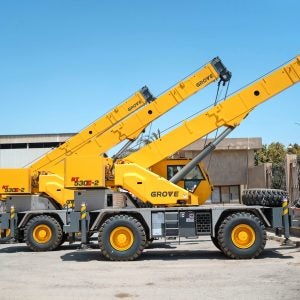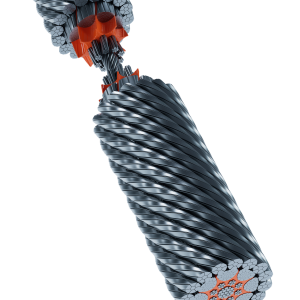An OSHA accident narrative summary, prepared by compliance officer David Becker, found that Fred John Silvester had been asked to lift a 44,775lb load of wire reel, from a lowboy trailer, at a radius of 15ft 9in. His Terex T-775 mobile hydraulic crane was configured with a boom length of 54ft 9.5in, at an angle of 73.29°. The crane was fully supported by its outriggers, mounted on steel plates on firm and level soil, with those on the load side fully retracted and those away from the load fully extended. The crane was carrying a 7,000lb counterweight.
In this configuration, the crane’s load chart rated its capacity as 14,500 – less than a third of the load being lifted. Silvester, supervised by rigging foreman Marc Unger, made a first attempt to lift the load over the side of the crane at 1.20pm. The crane’s upper sheave and hook were not centred over the crane, causing the load to swing away from the crane. On the first attempt, the crane tipped towards the load, and the rear outriggers lifted off the ground by about 3ft.
Silvester dropped the load, and made a second attempt to lift it, about a minute later. The crane remained in the same configuration, and this time tipped fully over towards the load, crushing the cab against trailer: Silvester suffered multiple, fatal, crushing injuries.
Sheedy was fined on the basis of four violations of US safety regulations. The most serious of these was a breach of title 8 CCR 4499(a), which states, “A crane shall not be loaded beyond the rated capacity” Sheedy was fined $18,000 for each of its two violations of this regulation. Sheedy was also fined for failing to provide proper safety training for either Silvester or Unger, for not displaying a written code of practices at the job site, and for operating the crane in the presence of powerlines and without a sign warning against doing so. Sheedy is appealing against the fine.






